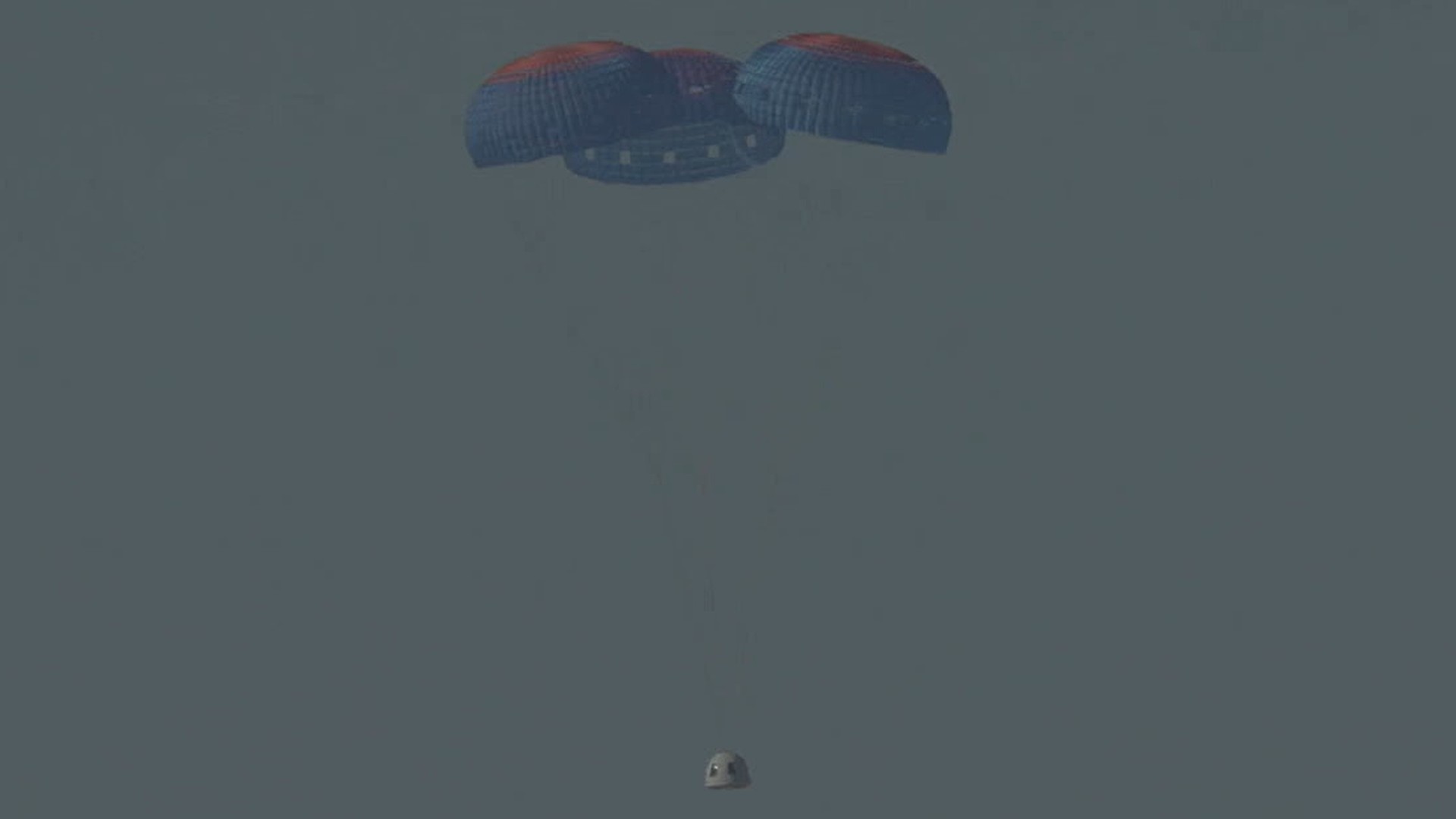Blue Origin launches 2nd human-rated New Shepard rocket, nails landing (video)
Blue Origin launched its second human-rated spacecraft on Wednesday (Oct. 23) after a more than two-week delay.
Jeff Bezos' aerospace company launched its uncrewed NS-27 mission at 11:30 a.m. EDT (1530 GMT) today, sending a brand-new New Shepard rocket-capsule combo on a brief trip to suborbital space. No people launched aboard NS-27, but the mission flew 12 research payloads, five of them on the booster and seven inside the capsule. The rocket reached a maximum altitude of around 332,000 feet (101 kilometers) before returning for a landing around seven minutes and 20 seconds later.
Roughly three minutes after that, the company's new crew capsule, the RSS Kármán Line, came in for a parachute landing in the West Texas desert. "Wow. Welcome home New Shepard. This was a great mission, a great day watching this new vehicle flying to space and back," said Blue Origin launch commentator Joel Eby during the company's livestream of the mission.
NS-27 marked the debut of the second human-rated New Shepard vehicle, which consists of a first stage known as Booster 5 and the crew capsule named RSS Kármán Line. (The Kármán line is the 62-mile-high boundary that many people regard as the start of outer space.)
Today's liftoff was originally scheduled for Oct. 7, but Blue Origin called that attempt off due to an issue with the vehicle. Another try six days later was scuttled by a GPS issue.
Related: New Shepard: Rocket for space tourism
"The vehicle features technology upgrades to improve the vehicle's performance and reusability, an updated livery and accommodations for payloads on the booster," Blue Origin wrote in a statement on Oct. 4.
The payload on today's mission included new navigation systems developed for New Shepard and Blue Origin's huge New Glenn rocket, as well as two LIDAR (light detection and ranging) sensors designed to operate in the lunar environment, according to Blue Origin.
Breaking space news, the latest updates on rocket launches, skywatching events and more!
As its name suggests, NS-27 was the 27th New Shepard mission overall. Eight of the vehicle's 26 flights to date have been crewed, sending up to six people at a time on brief trips to the final frontier.
Those eight crewed flights have all used the same New Shepard vehicle — the Booster 4/RSS First Step combo. This second human-rated spacecraft will enable "expanded flight capacity to better meet growing customer demand," the company wrote in the same statement.
Oct. 13 ended up being a busy day in spaceflight despite the nixing of NS-27's launch attempt: SpaceX launched its Starship Flight 5 test flight of Starship and Super Heavy, the world's largest and most powerful rocket on that day. That mission included the first-ever Super Heavy booster landing and capture at its launch site.
Editor's note: This story was updated on Oct. 23 to add the successful NS-27 launch.

Michael Wall is a Senior Space Writer with Space.com and joined the team in 2010. He primarily covers exoplanets, spaceflight and military space, but has been known to dabble in the space art beat. His book about the search for alien life, "Out There," was published on Nov. 13, 2018. Before becoming a science writer, Michael worked as a herpetologist and wildlife biologist. He has a Ph.D. in evolutionary biology from the University of Sydney, Australia, a bachelor's degree from the University of Arizona, and a graduate certificate in science writing from the University of California, Santa Cruz. To find out what his latest project is, you can follow Michael on Twitter.



